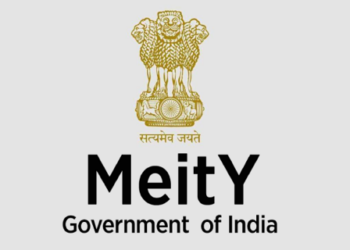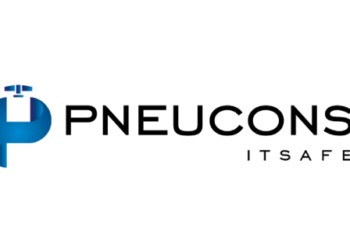
Everyone knows that China has been a hotbed of mergers and acquisitions activity the past few years, but what about its near neighbour and BRIC rival India?
Looking back on the GS Deal Monitor, there haven’t been too many Indian adventures, despite advertising being very big business in India (it is, after all a nation of over one billion souls) and this got me thinking as to why this was.
I think it’s because culturally, India is closer to the West than China is, and to Britain especially; it’s a democracy, if a chaotic one, with a Western-educated elite and English as its unifying language.
So it’s no surprise to see the country’s largest and – I think – oldest ad agency is a British one: Ogilvy & Mather. Other big, established networks include JWT, Leo Burnett, Grey, FCB, McCann Erickson and Kadence Int’l. Otherwise the scene is dominated by domestic agencies few in the West would have heard of – Mudra Communications, RK Swamy, Rediffusion and Contract Advertising. The Western groups have been increasingly visible at international events such as Cannes, and the creative outputs of these agencies – JWT and O&M especially – is highly rated.
But otherwise the Indian scene isn’t characterised by the kind of frenetic M&A activity one sees in China and South-East Asia. I think the big groups may be missing a trick here – according to research published last November by consultants McKinsey Global Institute (MGI), India’s consumer markets “will witness exponential growth during the period 2005-2025”. Also, during this period, the country’s total consumption is projected to increase fourfold, making it the fifth largest consumer market globally by 2025. MGI also anticipates India’s real GDP to increase at 7.3 per cent per annum through to 2025.
Furthermore, the Indian government has given backing to the advertising and marketing industry, which, says MGI, “renders the [Indian] advertising and marketing industry in India a fertile space”.
And the most fertile space of all is digital. A joint study by the Internet and Mobile Association of India (IAMAI) and IMRB International estimates the online advertising market in India will touch Rs 3,575 crore ($578.1m) by March this year, a 30 per cent rise from Rs 2,750 crore (US$ 444.7m) in March 2014.
Of the current Rs 2,750 crore (US$ 444.7m) digital advertisement market, MGI says search and display contribute the most: search advertisements constitute 38 per cent of total advertisement spends followed by display advertisement at 29 per cent.
A joint 2014 report by PwC and the Confederation of Indian Industry states that the internet’s share in total advertising revenue is anticipated to grow twofold from 8 per cent in 2013 to 16 per cent in 2018. Online advertising, which was estimated at Rs 2,900 crore (US$ 469m) in 2013, could jump threefold to Rs 10,000 crore (US$ 1.6bn) in five years, increasing at a compound annual rate of 28 per cent. Impressive numbers!
Even more interesting, and surprising, is that India is actually the world’s fastest-growing smartphone market (had Apple’s iPhone been as popular in India as it is in China, one can only imagine how unbelievably huge last week’s quarterly profits announcement would had been).
As a result, mobile advertising volume in India grew the fastest in the world, climbing a record 260 per cent since July 2013, even as the larger Asia-Pacific region where ad impressions delivery rose 70 per cent this year.
The ad traffic spike in India is due to a transformation in the market as mobile users shift from less-capable ‘feature phones’ to smartphones. This surprising data comes from a report, The State of Mobile Advertising, published last autumn by California-based ad platform Opera Mediaworks.
Tracking device adoption, the report – the ad network’s first study of the Indian market – said the Android platform has 41.7 per cent market share in India (while Apple’s iOS has just 0.4 per cent). The Indian audience for ads is predominantly young and male, Opera Mediaworks’ report also aid. The 18-24 age group accounts for over 60 per cent of all users while males make up 82 per cent (India is still very much a male-dominated society, although the youthfulness and comparative wealth of that demographic will get advertisers very excited).
Against this background, I was intrigued to note that late last week, Dentsu Aegis Network announced the acquisition of WATConsult, one of India’s leading social and digital media agencies, with over 160 professionals in Mumbai, Delhi, Bangalore and Kolkata. This could turn out to be one of the deals of the year, in terms of long-term significance.
It hasn’t been revealed how much the Japanese group paid, but WATConsult will become part of Isobar, Dentsu Aegis Network’s global digital marketing agency and will be referred to as ‘WATConsult – Linked by Isobar’.
Founded in 2007, WATConsult, set up by CEO Rajiv Dingra (a kind of Indian version of our own Ajaz Ahmed) has become one of India’s most-awarded social media agencies, with more than 48 awards received in 2014 alone.
Having evolved from being a social media agency to a full service digital agency, WATConsult also offers its client base with creative and technology services across mobile, digital and video. Other specialist areas include an in-house analytics capability with dashboards and tools for social and digital media. Clients include the Godrej Group, Nikon, Tata Chemicals, Bestseller Group, Bajaj Allianz and more than 70 other national and global brands.
It’s a pretty good business, in other words, and ticks all the boxes – operating in both a growth area and growth country, market leader in its field, strong management and creative record, strong talent pool and a mega-blue-chip client book.
Better still, Rajiv Dingra will continue as CEO of WATConsult – Linked by Isobar, reporting to Ashish Bhasin, chairman and CEO of Dentsu Aegis Network South Asia. Dingra’s talented management team, including Nipun Kapur (COO) and Heeru Dingra (CFO) will also continue in their respective roles.
The acquisition also gives Dentsu a valuable foothold in what may turn out to be an even bigger growth market than China. Observers now estimate that digital specialists at Dentsu Aegis Network in India now exceed 600 professionals, making it the only network in India offering “end-to end” and fully comprehensive digital services on this scale.
Nick Waters, CEO Dentsu Aegis Network Asia Pacific, said last Friday of the acquisition: “Alongside Isobar, iProspect, and WebChutney we have created the largest and highest quality digital services capability in India. We view India as a priority market and will continue to seek scaled and quality investment opportunities here”.
It will be interesting to see if Dentsu’s rivals will follow its lead.

















